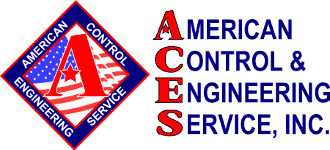THE MYSTERY
One of ACES customers was wrestling with an older oven, which had been suffering for years from random flameouts due to a finicky burner. It was used to heat-treat aircraft parts, and had been tinkered with on and off over the past 10 years in an attempt to pin down the cause, which was very intermittent. They hadn’t been able to determine if it was a problem with the burner, the electronics or the Programmable Logic Control (PLC) code.
After a flameout, the operators would try to restart the burner on the batch they were running, but by then the oven was operating at full temperature and the burner was designed to go to low fire for startup, so they had two choices: They could wait for it to cool off, causing an overall drop in temperature and loss of uniformity, or they could restart at a higher flame, leading to backfires when the burner relit with a loud boom, which was harmful for the equipment.
The customer’s business was heating up and they couldn’t afford any more downtime or ruined batches with a lukewarm oven. They needed the machine working consistently ASAP, so ACES dispatched a Control Systems Investigator (CSI) to the site.
THE PERP
The oven had a very old flame safeguard with no display, diagnostics or alarm features built in. When the burner flamed out, there was no way of knowing if it was because of the programming, or if the burner itself was failing.
SOLUTION ONE
The CSI installed a state-of-the-art Honeywell flame safeguard complete with alarm output and digital diagnostic display, and upgraded the programming to capture data in real time as faults occurred. He also programmed in extra alarm points to alert operators if a high or low gas pressure sensor or an airflow switch dropped out during runtime.
During testing there was an alarm pointing to the PLC and existing coding issues, which the CSI was able to fix. And he did all of this installation and programming as a quick turnaround, within 2-3 days. When he was finished the oven was running evenly at temperature with no other alarms being triggered. Both the CSI and the customer knew there were more intermittent problems remaining, and that they would be easier to capture with the new diagnostics.
SOLUTION TWO
Sure enough, a month later there was an error during the main flame establishment period, this time pointing to the burner — which the CSI was able to ascertain, thanks to the new flame safeguard and additional programming. Those additions also helped him track down an air-fuel mixture problem with one of the burners, which he fixed. One of the burners was also very dirty, so he cleaned and reinstalled it.
There were three burners on the oven, each designed to kick in at progressively higher temperatures. The CSI noticed that whenever there were issues with burner two that shut it down, burner three would also turn off. He reviewed the logs and ascertained that there was an error code on burner two, but not on burner three — which meant that burner three was being told to go off.
Further investigation showed that the PLC programming was written to instruct burner three to go offline whenever burner two did, which caused the oven to immediately lose two-thirds of its heating power.
The CSI went into the code and reprogrammed burner three to be independent of burner two. Now, if burner two alarms, burner three takes over for it. This update improved reliability and added redundant features.
As the CSI was finishing up work on the burners, the system threw up another error indicating the mechanical failure of a valve, so he replaced that as well.
As so often happens, the problem — in this case an intermittent burner flameout — was caused by multiple mechanical and programming issues. We could have tracked down the culprits without the new flame safeguard and programming upgrades, but it would have taken much longer.
Months later the customer hasn’t experienced a single trouble call. They have a smoothly running machine and the tools to know what’s going on if any other maintenance problems arise.
Don’t endure misbehaving equipment for years, months or even weeks. At the first sign of trouble, give ACES a call and we’ll get our experienced and skilled technicians on the problem right away, so you can get back to a steady burn on your production line.
